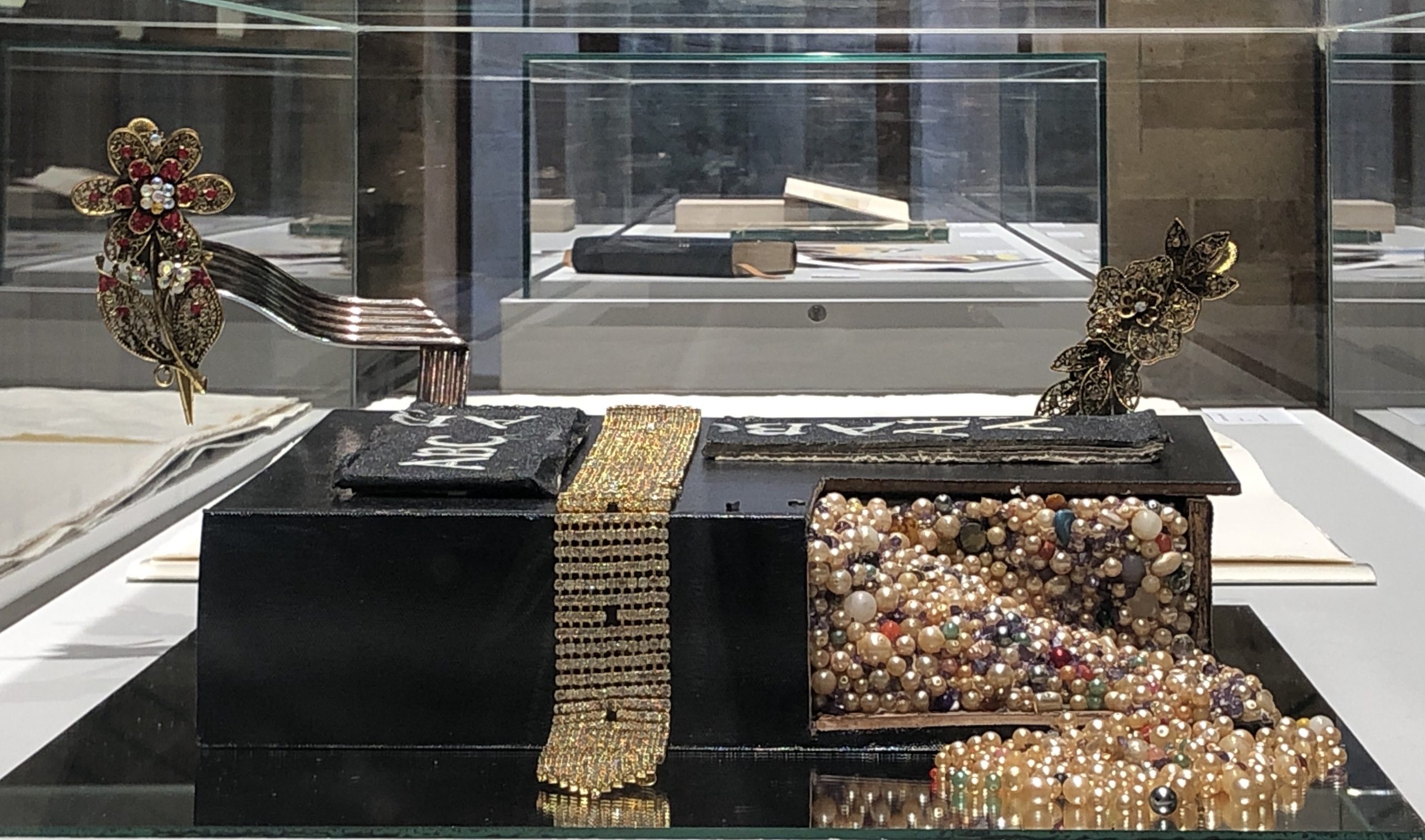
MUSEO BONCOMPAGNI LUDOVISI PER IL COSTUME E LA MODA ITALIANA
DIREZIONE DEI MUSEI STATALI DI ROMA
IL GIOIELLO NELLA MODA E NELL’ARTE
THE JEWEL IN FASHION AND ART
All’interno degli spazi espositivi del Museo Boncompagni Ludovisi si snoda un racconto di storia della moda tra abiti, gioielli e ritratti dipinti, molti dei quali sottolineano lo stretto legame iconico tra gioiello e moda. Il tema prevalentemente affrontato nei dipinti è quello del “ritratto” (al femminile), il cui significato etimologico, storico letterario e sociale, è accompagnato da molte variazioni dai presupposti culturali e dalle destinazioni, che hanno sostenuto fin dall’antichità e lungo i secoli, dalle funzioni e dai contenuti di ampio respiro culturale. I gioielli in questi dipinti identificano il carattere e la personalità del personaggio ritratto, definendone lo stato sociale, come è tradizione fin dall’antichità.
L’iter espositivo mette in luce gli elementi cruciali nella storia del gioiello come elemento determinante nel riconoscimento della figura ritratta, status symbol di un amore eterno (Philip Laszlo, Alice Blanceflor de Bildt, 1925), elemento accessorio porta fortuna (Giovanni Vagnetti, Fattoressa di Anghiari, 1935 e Marcella Caja, La Ciociara, 1937), rappresentazione sia di bellezza sia di magia legato al significato intrinseco delle pietre preziose e delle perle (Cipriano Efisio Oppo, Ritratto della fidanzata, 1920; Giacomo Balla, La Bionbruna, 1926). Esemplari sono i gioielli e i monili esposti che concretamente trattano l’evoluzione della tecnica e della moda: i collier e i bracciali, anche le catene di materiale non pregiato, di stile americano che rimandano al momento di protesta degli anni Sessanta, in cui i gioielli costituivano un emblema di ribellione proprio nel loro essere antiestetici. Significativo è l’uso elegante e raffinato di materiali alternativi all’oro (i bracciali di finte perle in vetro e fiori di stoffa e cera). Infine di raro pregio sono le sperimentazioni tecnologiche ed esecutive anni Settanta di Alberto Giorgi e Umberto Mastroianni, o ancora il revival dell’orientalismo con il pendente a forma di croce con ametista.
La storia del gioiello al Museo si conclude con il Libro d’artista di Joseph Pace, Flowers#2, 2010, (carta, cartone ritagliati, pigmenti dorato, bijoux, lamina dorata), gioiello teosofico, tra amuleto e simbolo esistenziale, concludendo o meglio riaprendo alle prospettive dei gioielli moderni tra lusso dei brand e serialità di marca.
Inside the exhibition spaces of the Boncompagni Ludovisi Museum unfolds a story of the history of fashion among clothes, jewels and painted portraits, many of which underline the close iconic link between jewelry and fashion. The theme mainly dealt with in the paintings is that of the “portrait” (female), whose etymological, historical, literary and social meaning is accompanied by many variations from the cultural presuppositions and destinations, which they have supported since ancient times and over the centuries , with functions and contents of wide cultural scope. The jewels in these paintings identify the character and personality of the portrayed character, defining their social status, as has been tradition since ancient times.
The exhibition process highlights the crucial elements in the history of jewelery as a determining element in the recognition of the portrayed figure, a status symbol of eternal love (Philip Laszlo, Alice Blanceflor de Bildt, 1925), an accessory element that brings good luck (Giovanni Vagnetti, Fattoressa di Anghiari, 1935 and Marcella Caja, La Ciociara, 1937), a representation of both beauty and magic linked to the intrinsic meaning of precious stones and pearls (Cipriano Efisio Oppo, Portrait of his girlfriend, 1920; Giacomo Balla, La Bionbruna, 1926) . Exemplary are the jewels and the jewels on display that concretely deal with the evolution of technique and fashion: the necklaces and bracelets, even the chains of non-precious material, of American style that refer to the moment of protest of the Sixties, in which the jewels constituted an emblem of rebellion precisely in their being unsightly. Significant is the elegant and refined use of alternative materials to gold (the bracelets of fake glass beads and flowers of fabric and wax). Finally, of rare value are the technological and executive experiments of the 1970s by Alberto Giorgi and Umberto Mastroianni, or the revival of orientalism with the cross-shaped pendant with amethyst.
The history of the jewel at the Museum ends with the artist’s book by Joseph Pace, Flowers # 2, 2010, (paper, cut-out cardboard, golden pigments, bijoux, gold foil), theosophical jewel, between amulet and existential symbol, concluding o better by reopening the perspectives of modern jewels between luxury brands and brand seriality.
